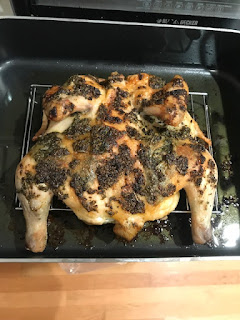2022 is the Chinese Year of the Tiger
Christmas
is behind us, with its turkey or prime rib or tamales or whatever else you
chose to fix. But there’s still New Year’s with it set menu, at least for us Texans—black-eyed
peas and ham. When I was a child in Chicago, my parents always had oyster stew,
a sort of milk soup that was way beyond my taste buds, but they loved. I’d
never eaten black-eyed peas until I moved to Texas, and even then, I was slow
to try them. Finally, I made Hoppin’ John one night for my children (we called Hoppin Uncle John after my brother), figuring
that I could disguise the peas with rice, tomatoes, and seasoning. Today I like
black-eyed peas with their pot likker, no disguising them. My Mississippi daughter-in-law
has also taught me to like them mixed into mashed potatoes.
Tomorrow,
I will make a big pot of peas with ham. We’ll have it for New Year’s and for
Twelfth Night—January 6. And thereafter in the freezer so we can pull them out
on a cold night and warm our bellies.
I approach
the new cooking year with three specific goals: I want to roast a duck, do a
prime rib (maybe for my youngest son’s fiftieth birthday), and present a Beef
Wellington. Each one poses problems. Although I received a wonderful new
toaster oven—bigger, with an air fryer—for Christmas, I think I’ll still have
to use the oven inside for these projects. Duck, because I hear lots of raves about
it, and I want to do duck fries with the grease; prime rib because it’s so
expensive it intimidates me; and Beef Wellington just because it’s a challenge—a
luxury dish I’ve never attempted.
Meantime
I worried about a seasonal recipe to give you all this week. Everyone knows how
to cook black-eyed peas and Hoppin’ John too. If you don’t, email
me at j.alter@tcu.edu. Cranberries are
pretty much out of season or I'd share the chutney recipe I like or the
delicious cranberry cake recipe my neighbor gave me. I guess you can still get
frozen, but fresh seem to have disappeared as Christmas left.
Do you
still have turkey left over, either in the fridge or the freezer? How about
this casserole? I’ve read that casseroles—hotdishes, they call them in the
Midwest—are passé, like Jell-O salads, but I don’t for a minute believe it. I
love a good casserole. This one isn’t a celebratory dish for New Year’s Eve, but it’s
a good, easy supper some weekday night.
Confession:
I’ve been making this casserole for years, but as I keyed in the actual
directions tonight (from some long-forgotten cooking magazine), I realized I’ve
strayed from the recipe a lot. Instead of the thyme and parsley, I just throw
in a handful of dried herbs—basil, oregano, thyme, etc. And for topping I often
use French’s fried onion rings. The point is that this recipe is forgiving—you
can use it as a base and go where you want. Don’t like cooked carrots? Leave them
out. Or substitute. But don’t skip the wine infusion—it gives the dish its
distinctive taste.
Turkey casserole (or chicken
or tuna)
1 cup white wine
¼ cup chopped parsley
½ tsp each dried thyme, salt
and pepper
2 cans cream of mushroom soup
1 cup cooked rice
1 10-oz. pkg frozen green peas,
thawed
1 can baby carrots and 1 can
tiny onions, both drained
Topping:
½ cup dry breadcrumbs
¼ cup grated Parmesan
¼ cup minced fresh parsley
2 Tbsp butter
Directions:
Combine
wine and herbs in oven-proof 3-quart casserole. Boil hard for three minutes to
get the “ash”—the herbs will blacken. Remove from heat and stir in canned soups.
Add rice and vegetables and cook on medium, stirring frequently, until vegetables are cooked and ingredients are thoroughly warmed.
Mix
topping ingredients and sprinkle over the casserole. Broil one or two minutes, until cheese melts
and topping turns golden. Watch carefully that it doesn’t burn.
Serves six.















